

"These discs are offered as an electronic exhibition of our era, comprising more than 50,000 photographs, 250,000 pages of text, 24,000 maps and many millions of statistics with which to explore - now and in the future - every aspect of our life in the 1980s"
(Introductory text on the Domesday Discs box)
(This is all originally from memory)
In roughly 1984 the BBC embarked upon an ambitious project
to get a 'Domesday Book' together using its Acorn platform. The plan was to
involve schools and colleges across the nation, compiling and collating facts
and figures about the area around them and their own lives, both historical
and the present day. The aim was to create a library of
information that could be put onto Laser Discs - a medium gaining in popularity
at the time because of the film industry. Players were becoming increasingly
popular with movie buffs and the cost of discs was coming down.
The Domesday project was such a step forward in domestic
computing it was even featured on the likes of the BBC's 'Tomorrow's World'
programme, where Michael Wood and Sarah Greene (mmm :)) showed off
the new hardware - I originally thought they showed a new BBC Master 128 but a squint at the July '85 issue of A&B Computing shows it as a BBC B with 2nd 6502 processor ('cheese wedge') and a top-loading laserdisc player, possibly the Philips VP405.
The standard OS Map of the UK was split into roughly 4x3km squares and schools in each area were invited to contribute photographs and text that showed their daily life in the 1980s; classes went out on field trips to collect information about their local community and in areas where there were no schools the local landowners were invited to take part. The result was collated with no attempt to correct spelling or grammar and split across two sides of a standard laserdisc, approx 300mb per side. The north/south sides of the discs were split on a line across Lancashire to Yorkshire which I have to say irked some of the people who've viewed my demonstrations over the years!
The other disc in the set was the National Disc that featured a gallery of contemporary images, statistics, facts and lists of things like the UK Top 40 selling singles. Side 1 of the disc also featured several 'walk-throughs' of different areas of the country as well as different classes of house from farmhouse to stockbroker house. What made the walkthroughs interesting was they were fully under user control, you could choose any one of 8 viewing angles and move around each area, pretty good in 1986!
Production Domesday systems were based on the new BBC Master 128 with a second 65C102 processor, SASI interface (early version of SCSI) and a new filesystem based on a read-only version of ADFS called VFS - Video File System. Completing the setup was a Philips VP415 Laserdisc player that
had a SASI interface and Genlock bolted to the bottom to allow the Master
to overlay its display onto the information coming off the discs. Control was via a Marconi
Trackball, mouse or keyboard as a last resort.
The drawer on the LV-ROM was so strong they had to put a warning on it so
that schoolkids didn't trap their fingers! [1]
Despite the high cost (approx. ukp4,000!)
the project eventually featured in a lot of schools and libraries. The Domesday machine
also had another uses - a list of known disks is: Domesday (National and Community),
The Coutryside Disc (run your own farm), the Ecodisc (run your own nature reserve), Volcanoes, the North Polar Expedition and a special London disc that
focused on, well, London :) Other companies got in
on the act and produced training disks for things like secretarial work and
operating telephone exchanges. The lucky buggers at Bletchley Park's Retrobeep have
quite a few of these disks now, it'll be interesting to give them the once over!
When I finally got my paws on a set of disks (9/4/03) I was
most chuffed to find the whole system still worked - so much for the national
press saying the hardware to run the Domesday was impossible to find :o))
Obviously the journalists did all their research in the pub. Nice to see that
one of the first things I found was a photographic walk-through of a street
not far from here in Newcastle, pity it was part of the social segment of the disc under
'run-down area'. Sheesh.
I was surprised at how quick it is too, considering
how much data is being shifted around. Also, because the Laserdisc player
is a standard Philips one it has a SCART connector on the back so I can run
a telly off it....nice.
In a good bit of coincidence, shortly after I'd got my disk set
I was contacted by by Chris Hughes of the Wakefield RiscOS Club with the result that me
and the Domesday system spent our first day at the
annual Wakefield RiscOS show, and demand to see the system running was phenomenal!
For 6.5 hours I didn't stop, and it was great to meet people who'd originally
contributed data and images to the discs, some of whom hadn't ever seen the
fruits of their labour. The system worked almost flawlessly
for the whole day, and only had a minor hiccup when the player decided it
didn't want to read any discs for a few minutes. Thanks to Mike from the RiscOS club
for giving me a pristine copy of the Ecodisc, your very own chance to walk or
fly over a nature reserve. Coupled with a floppy drive you can even have a go
running the place, though I've not tried it.
Aside from a spell of unemployment in 2004 I've been at the
show every year since then and interest from the public has increased as much as the reliability
of my LVROM has decreased :) In late 2004 I picked up a second Domesday system that
turned out to be one of the original Philips demo units (number 7), complete with
boxed remote incorporating a Philips compliments slip. Pity the LVROM is even more flakey
than my main unit - it won't even pass the diagnostics. Bugger.
Latest arrival is the Volcanoes disc and it's in excellent condition. I think that's because it's rather boring :o)
One question I get asked a lot is 'why isn't the Domesday available on CD or DVD' and the basic answer is that it is, but not to the general public. There has been at least 3 projects to modernise the equipment, possibly the better known one being CAMiLEON from Leeds and Michigan Universities that has effectively stalled because of the main thing stopping all projects - copyright. Some of the hurdles have been overcome, particularly use of the Ordnance Survey map data which has now been signed off, but the main problem is the 1 million people who contributed text and facts who would all have to be asked if using their contributions is OK for a new project.
Personally I can't see why the regulatory bodies can't just deem the Domesday Project to be of national and historical importance and just put the whole system out again after saying 'bugger it, let's just do it' but I suppose that would open up a can of worms bigger than might be acceptable for tin-based worm storage. I'm led to believe the Public Records Office has a DVD version but again I'm not sure if it's available to the public. An online version of the pictures from the system is available at www.domesday1986.com but it doesn't appear to be working, maybe it doesn't like Macs :o\
Pictures from the 2006 RiscOS show can be found under the WROCC menubar entry.....
Pictures from the 2006 RiscOS show can be found under the WROCC menubar entry.....
I'll leave the last word (for now) from the technical description of the system in the Domesday User Manual by Peter Armstrong and Mike Tibbets:
"As a historical record, they are designed to be laid down like wine, gaining value with age. But they are also designed to be a beginning: to demonstrate the enormous potential of interactive optical media for many aspects of our national life. The more they can be developed, extended and re-worked by everyone who uses them, the more value they will gain in this equally important way."
"As a historical record, they are designed to be laid down like wine, gaining value with age. But they are also designed to be a beginning: to demonstrate the enormous potential of interactive optical media for many aspects of our national life. The more they can be developed, extended and re-worked by everyone who uses them, the more value they will gain in this equally important way."
Wish I'd read this user manual before last weekend's RiscOS show, there's depth and info on these disks that isn't obvious to the casual observer including many 'hidden' pictures, demographic info, charting info and facts, searches, extra videos, demos etc. I think my system will be getting some extra exercise in the near future! Also, since the pictures and maps etc on the discs are stored as video frames it's possible to write your own BASIC programs to create slideshows simply by referencing the frames you need - each frame number is easily accessed when it's on display for re-use:
10 *VP 2
20 *FRAME 5000
30 G=GET
40 *FRAME 5030
&CUpdate May '06
Here's something you don't see every day, a machine from BBC Enterprises in Wood Lane marked 'Domesday Machine' 'Genlock 3'. This is an issue 1 Master dated 12/85 that also contains a Cox 630B genlock from Michael Cox Electronics. This device synchronises an incoming video signal (at 16Mhz in this case) and locks it to the output of the host machine allowing the user to overlay video titling and captions etc which means there's every likelihood that this machine was one of the few used to help create the Domesday Project master discs, or the titling for them at the very least. Remember that in the standard AIV system the genlock was in the laservision player, also that the Master system wasn't released to the public until March '86 at the earliest.
Here's something you don't see every day, a machine from BBC Enterprises in Wood Lane marked 'Domesday Machine' 'Genlock 3'. This is an issue 1 Master dated 12/85 that also contains a Cox 630B genlock from Michael Cox Electronics. This device synchronises an incoming video signal (at 16Mhz in this case) and locks it to the output of the host machine allowing the user to overlay video titling and captions etc which means there's every likelihood that this machine was one of the few used to help create the Domesday Project master discs, or the titling for them at the very least. Remember that in the standard AIV system the genlock was in the laservision player, also that the Master system wasn't released to the public until March '86 at the earliest.
Update April '17
A random conversation at work results in the 3rd VP415 Laservision player to land in the Museum, a welcome addition!
A random conversation at work results in the 3rd VP415 Laservision player to land in the Museum, a welcome addition!
Domesday AIV Thumbnails
 |  | 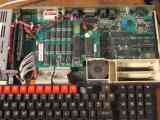 | 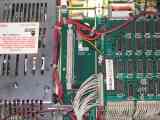 |
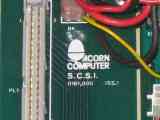 | 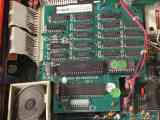 | 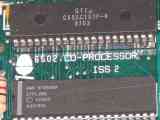 | 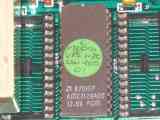 |
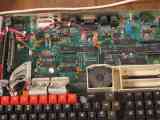 | 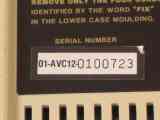 |  | 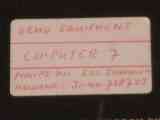 |
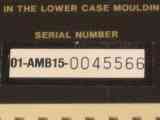 | 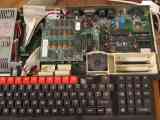 |  |  |
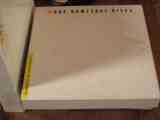 | 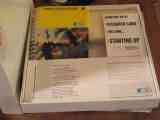 | 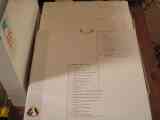 | 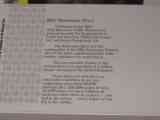 |
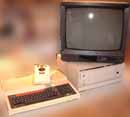 |  | 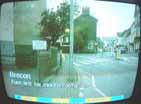 | 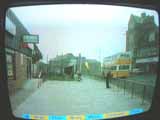 |
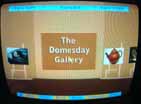 | 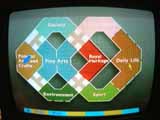 |  |  |
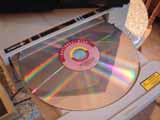 |  |  |  |
 | 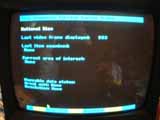 |  |
Domesday Genlock system Thumbnails
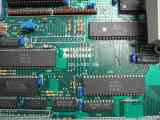 |  | 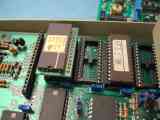 | 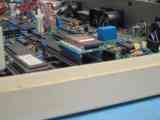 |
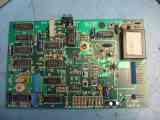 | 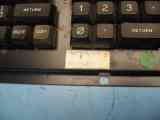 | 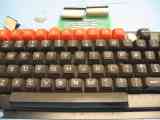 | 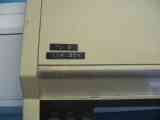 |
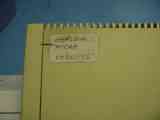 | 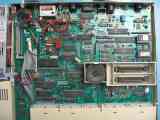 | 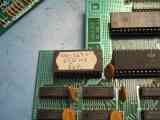 | 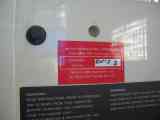 |
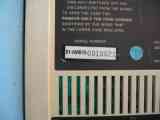 |  | 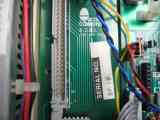 |  |
[1] Thanks to Andy Finney, one of the
original Domesday team members, for pointing that out :)
*Update* 29/05/03
Courtesy of Andy Finney comes a couple of web links
that are excellent reading for anyone interested in the Domesday Project.
Thanks! :
His own
site about how the system was put together and its current futures.
BBC News about the Domesday systems
BBC News about the Domesday systems